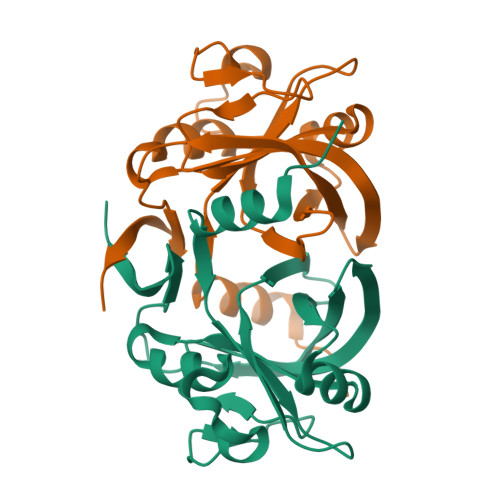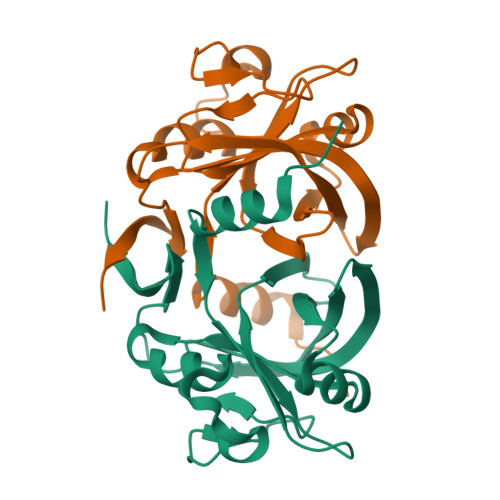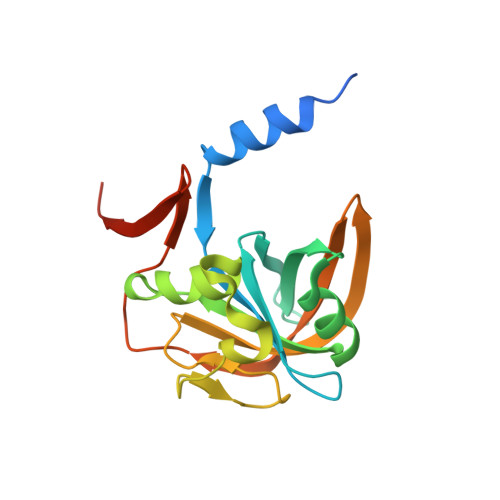Characterization of chlorophenol 4-monooxygenase (TftD) and NADH:FAD oxidoreductase (TftC) of Burkholderia cepacia AC1100.
Webb, B.N., Ballinger, J.W., Kim, E., Belchik, S.M., Lam, K.S., Youn, B., Nissen, M.S., Xun, L., Kang, C.(2010) J Biological Chem 285: 2014-2027
- PubMed: 19915006
- DOI: https://doi.org/10.1074/jbc.M109.056135
- Primary Citation of Related Structures:
3HWC, 3K86, 3K87, 3K88 - PubMed Abstract:
Burkholderia cepacia AC1100 completely degrades 2,4,5-trichlorophenol, in which an FADH(2)-dependent monooxygenase (TftD) and an NADH:FAD oxidoreductase (TftC) catalyze the initial steps. TftD oxidizes 2,4,5-trichlorophenol (2,4,5-TCP) to 2,5-dichloro-p-benzoquinone, which is chemically reduced to 2,5-dichloro-p-hydroquinone (2,5-DiCHQ). Then, TftD oxidizes the latter to 5-chloro-2-hydroxy-p-benzoquinone. In those processes, TftC provides all the required FADH(2). We have determined the crystal structures of dimeric TftC and tetrameric TftD at 2.0 and 2.5 A resolution, respectively. The structure of TftC was similar to those of related flavin reductases. The stacked nicotinamide:isoalloxazine rings in TftC and sequential reaction kinetics suggest that the reduced FAD leaves TftC after NADH oxidation. The structure of TftD was also similar to the known structures of FADH(2)-dependent monooxygenases. Its His-289 residue in the re-side of the isoalloxazine ring is within hydrogen bonding distance with a hydroxyl group of 2,5-DiCHQ. An H289A mutation resulted in the complete loss of activity toward 2,5-DiCHQ and a significant decrease in catalytic efficiency toward 2,4,5-TCP. Thus, His-289 plays different roles in the catalysis of 2,4,5-TCP and 2,5-DiCHQ. The results support that free FADH(2) is generated by TftC, and TftD uses FADH(2) to separately transform 2,4,5-TCP and 2,5-DiCHQ. Additional experimental data also support the diffusion of FADH(2) between TftC and TftD without direct physical interaction between the two enzymes.
Organizational Affiliation:
Department of Chemistry, WashingtonState University,Pullman, Washington 99164-4660, USA.


















